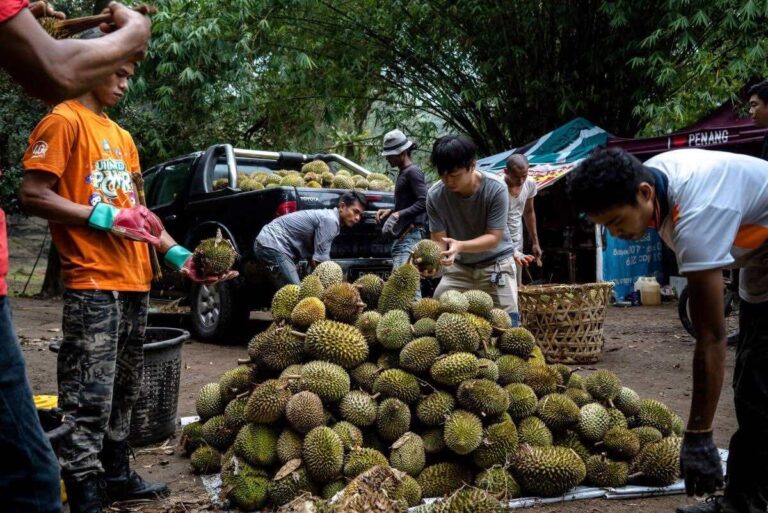Amidst the lush landscapes of Thailand’s durian heartland, where the air is thick with the sweet yet pungent aroma of the prized fruit, a crisis looms. As a seasoned durian laborer deftly plucks a cumbersome fruit from a towering tree, it’s evident that the kingdom’s renowned “king of fruits” faces an existential threat. Swept by a relentless heatwave gripping Southeast Asia, the once-bountiful yields of durian are dwindling, sending shockwaves through the industry.
Durian, celebrated as one of Thailand’s most illustrious exports, bears the brunt of climate change as soaring temperatures and parched landscapes hamper its growth. The consequences ripple through the supply chain, from farmers grappling with diminished harvests to sellers navigating economic uncertainties.
“This year is a crisis,” laments Busaba Nakpipat, a seasoned durian farmer in eastern Chanthaburi province, echoing the sentiments of many in the agricultural sector. With temperatures soaring to around 40 degrees Celsius (104 degrees Fahrenheit) for weeks on end, the usual durian season from March to June is curtailed. Busaba, who inherited her parents’ farm three decades ago, foresees a dire future if the scorching weather persists. “If the hot weather continues to rise in the future, it’ll be over,” she solemnly predicts, highlighting the existential threat looming over durian cultivation.
The impact of the heatwave reverberates through every aspect of durian farming. The accelerated ripening process under such conditions compromises the fruit’s quality, diminishing its market value. Operational costs soar as farmers grapple with water scarcity, resorting to costly measures like trucking in thousands of liters of water to sustain their precious durian trees.
In the bustling durian markets, anxiety grips stall-holders as they confront the stark realities of diminished yields and uncertain futures. Siriwan Roopkaew, tending to her family’s stall, acknowledges the challenges posed by water scarcity, which impacts the fruit’s size. Despite the resilience of prices driven by demand from China, concerns loom large over the industry’s long-term sustainability.
With China emerging as the primary destination for Thailand’s durian exports, comprising nearly 95 percent of total exports, any disruption in supply sends shockwaves through the market. Reports of a surge in durian imports from Vietnam underscore the vulnerability of Thailand’s durian industry to climatic vagaries.
